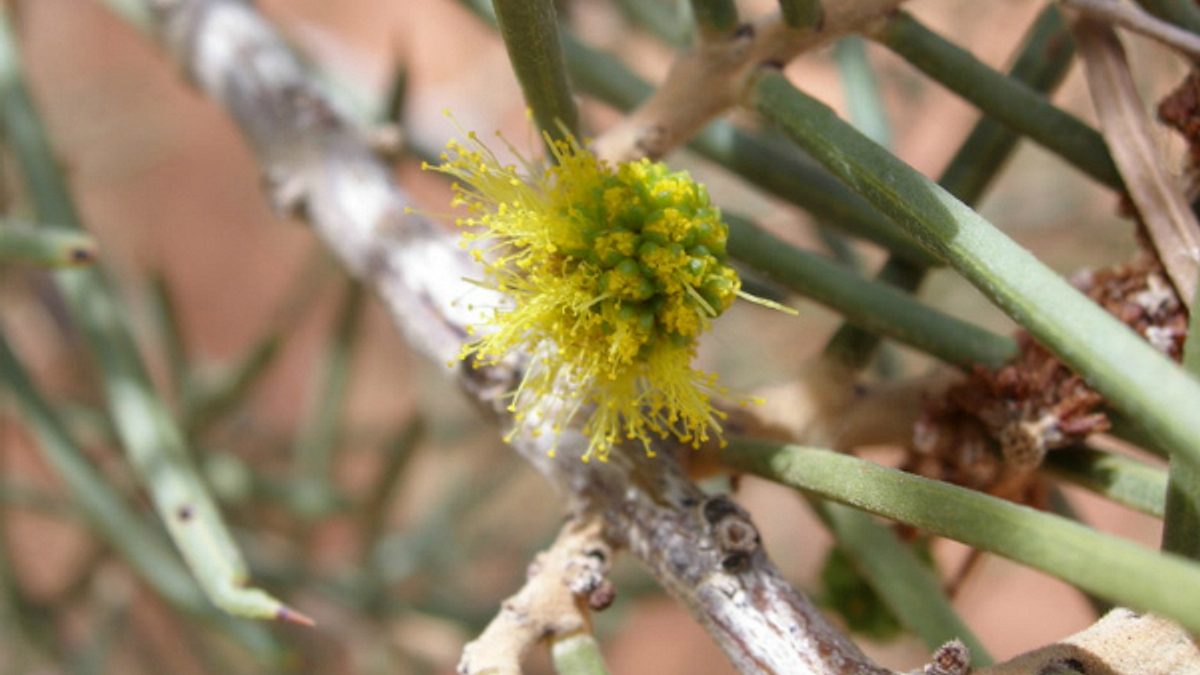Native plants
The South Australian Arid Lands region is home to an extraordinarily diverse range of native vegetation (flora). Native vegetation refers to any naturally occurring local plant species which are indigenous to Australia, from small ground covers and native grasses to large trees and water plants. However, a quarter of all the plants recorded in South Australia are considered to be threatened, and less than 30% of native vegetation remains in the agricultural areas, with some areas lower than 10%. Find out about the significant and endemic native plants in the region.
Why is flora important?
Native flora is important for many reasons:
- Ecological value: Australia’s native flora is extraordinarily diverse and many are found nowhere else in the world. As a result, they provide the unique landscapes of the region, provide habitat for native animals, create wildlife corridors, provide shelter belts to protect stock and crops, provide protection from wind and water erosion by holding the soil together, protect water quality; and reduce the greenhouse effect.
- Economic value: economically, native vegetation and its direct soil and water functions support the productive capacity of many important sectors of the Australian economy, including agriculture, forestry, fisheries, aquaculture and tourism.
- Social and cultural value: native vegetation shapes the Australian culture and national identity, and so we want to allow future generations to enjoy our unique environment. For Indigenous Australians, the land and its resources have underpinned Indigenous history, innovation, culture, spirituality and economics for tens of thousands of years.
Why manage flora?
Native vegetation plays a vital role in the health and prosperity of South Australia's ecosystems, communities and natural resource-based industries. As a result, threats to native vegetation have potentially serious consequences for Australia. These include the decline of biodiversity and reduced ecosystem functioning, reduced water quality, increased erosion and salinity, increased greenhouse gas emissions, reduced productivity and impacts on cultural and spiritual identity.
Threats to flora
- clearance
- declining ecosystem health
- fragmentation of ecosystems
- changed fire patterns, such as changed frequency, intensity and scale of fire
- changed quantities and patterns in water and water flows
- unnatural water regimes
- competition with introduced plants
- grazing by feral animals and livestock
- pollution and diseases
- climate change
- salinity
- mining impacts
- tourism and recreation impacts
- urban growth
Need advice to establish a native garden?
Try these people:
- Nuthin' but Natives is a wholesale Native Nursery at Booleroo Centre that is open to the public by appointment only. Ph (08) 8667 2442 E: btwhellum@bigpond.com.au
- Trees for Life has a long running volunteer program where volunteers can grow your plants for you. https://treesforlife.org.au/or...
- Other SA based nurseries
Flora we are working to protect

Name: Spidery Wattle; Balcanoona Wattle
Scientific name: Acacia araneosa
Regional status: Not listed
Related links:

Name: Purplewood Wattle
Scientific name: Acacia carneorum
Regional status: Not listed
Related links:

Name: Menzel's Wattle
Scientific name: Acacia menzelii
Regional status: Not listed
Related links:

Name: Pickard's Wattle; Bird's Nest Wattle
Scientific name: Acacia pickardii
Regional status: Not listed
Related links:

Name: Bullock Bush
Scientific name: Alectryon oleifolius
Regional status: Not listed
Related links:

Name: Arckaringa Daisy
Scientific name: Olearia arckaringensis
Regional status: Endangered
Related links:


Name: Slender Bellfruit
Scientific name: Codonocarpus pyramidalis
Regional status: Not listed
Related links:

Name: Desert Greenhood
Scientific Name: Pterostylis xerophila
Regional status: Vulnerable
Related links:

Name: Salt pipewort
Scientific name: Eriocaulon carsonii
Regional status: Not listed
Related links:

Name: Mt Finke Spider Flower
Scientific name: Grevillea treueriana
Regional status: Not listed
Related links:

Name: River red gum
Scientific name: Eucalyptus camaldulensis
Regional status: Not listed
Related links:

Name: Slender swainsona
Scientific name: swainsona-murrayana
Regional status: Not listed
Related links:
